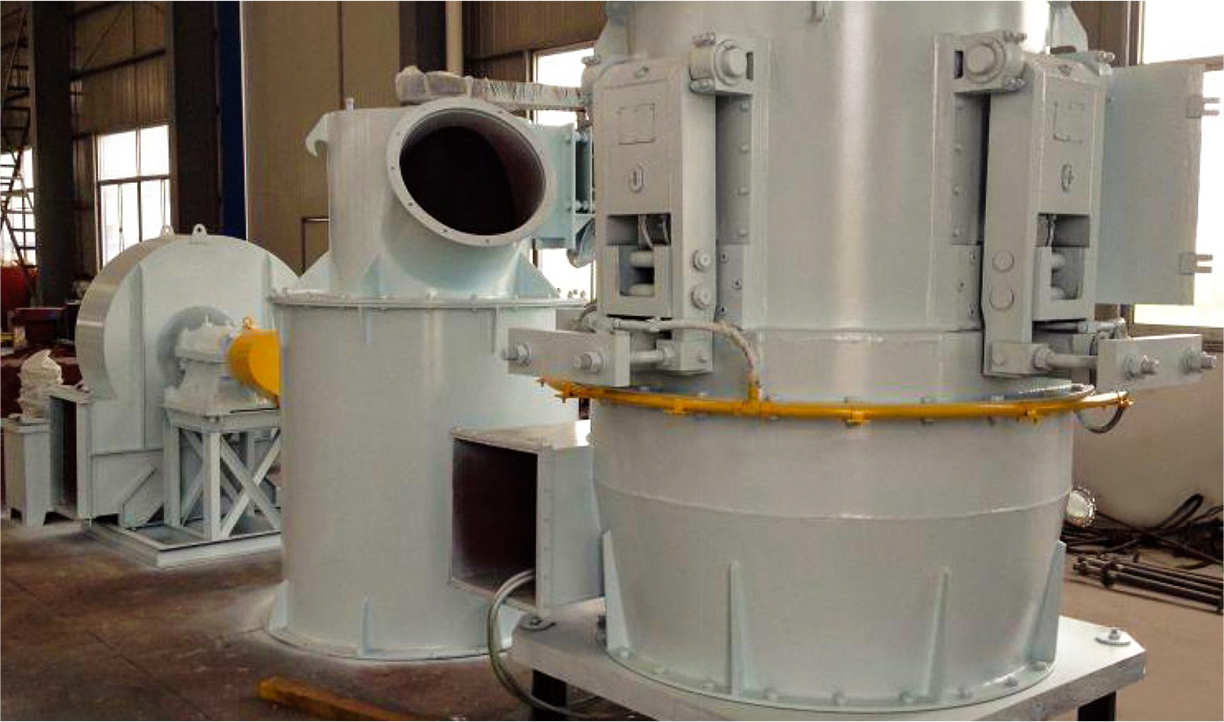Reducing wear in a Pendulum Mill is essential to ensure its long-term performance, minimize maintenance costs, and improve the efficiency of the milling process. Both the design of the equipment and its operational practices can be optimized to reduce wear. Here are several ways to optimize the design and operation of a Pendulum Mill to reduce wear:
Use of High-Quality Wear-Resistant Materials
Material Selection: The components most susceptible to wear, such as the grinding rollers, grinding rings, and mill liner, should be made from high-quality, wear-resistant materials. Common materials include high-chromium cast iron, carbide-coated steel, or specialized alloy steels.
Hardfacing: Hardfacing or applying coatings of wear-resistant materials to the surfaces of components can significantly reduce wear. For example, applying tungsten carbide or other tough coatings to the grinding rollers and rings can extend their lifespan.
Improved Lubrication Systems
Lubrication: Proper and regular lubrication of the grinding rollers and bearings is essential to reduce friction and wear. Using high-quality lubricants and ensuring that the lubrication system is working effectively can significantly reduce the wear rate.
Automatic Lubrication Systems: Incorporating automatic lubrication systems ensures that the required amount of lubrication is provided consistently and efficiently, preventing under-lubrication, which can lead to excessive wear.
Lubricant Selection: Choosing the right lubricant based on the operating conditions (temperature, load, speed) can greatly enhance the performance and reduce wear.

Optimizing Operational Parameters
Controlling Feed Size: Feeding material that is too large can cause excessive wear to the grinding components. Ensure that the material is pre-processed or screened to the correct size before entering the mill.
Maintaining Optimal Feed Rate: A consistent and appropriate feed rate ensures that the load on the grinding rollers is evenly distributed, preventing overloading that could cause localized excessive wear.
Adjusting Grinding Pressure: The pressure applied to the grinding rollers should be carefully controlled. Excessive pressure leads to more friction, which increases wear, while insufficient pressure can result in inefficient grinding. Maintaining optimal pressure settings helps in reducing wear.
Monitoring Particle Size: Ensure that the product's particle size is regularly monitored and adjust the settings to maintain the correct level of fineness. Operating the mill with improper particle size can lead to poor grinding efficiency and increased wear on the grinding components.
Optimizing the Airflow and Classification
Airflow Control: The airflow within the Pendulum Mill should be optimized to reduce excessive friction and prevent overloading. Maintaining the correct airflow helps in the transportation of the ground material, preventing particles from being subjected to unnecessary grinding and wear.
Efficient Separation: The classifier should be adjusted to prevent the recirculation of excessively fine material that has already been ground. Recirculation leads to unnecessary wear because the material is ground again when it is no longer needed.
Regular Monitoring and Maintenance
Frequent Inspections: Regularly check the Pendulum Mill for signs of wear or misalignment, particularly in high-wear areas like the grinding rollers, rings, and liners. Early detection of wear can help prevent more severe damage and reduce downtime for repairs.
Component Replacement: Timely replacement of worn components such as grinding rollers, rings, or liners ensures that the mill operates efficiently without overworking the remaining parts.
Vibration Monitoring: Monitoring vibrations can help detect issues such as uneven wear, imbalanced components, or misalignments early, preventing accelerated wear.
Optimizing the Design of Grinding Components
Improved Roller and Ring Design: The design of the grinding rollers and rings can be optimized for better wear resistance. For example, creating more uniform surface contact between the rollers and the grinding rings can reduce localized stress and wear.
Reducing Impact Loads: Modifying the design of the material feeding system and adjusting the roller configuration can help minimize impact loading on the mill components. Impact loads can lead to accelerated wear and premature failure of parts.
Controlling Moisture Content in Feed Material
Material Dryness: Excess moisture in the material being processed can lead to clogging and uneven wear in the grinding area. Excessive moisture can also cause increased friction between the grinding components and the material. Ensuring that the feed material has the correct moisture content helps reduce wear and improves grinding efficiency.
Efficient Dust Collection and Preventing Abrasive Build-Up
Dust Collection System: A good dust collection system helps reduce the abrasive wear caused by fine particles settling on equipment surfaces. This system prevents these particles from accumulating and being repeatedly recirculated through the grinding zone, which can contribute to unnecessary wear.
Cleaning and Maintenance: Ensuring that the system is kept clean and that no dust build-up occurs inside the mill can also reduce abrasion to components and enhance the mill's efficiency.
By incorporating these design and operational optimizations, Pendulum Mill wear can be minimized, which leads to longer service life, reduced maintenance costs, and more efficient milling operations.

 English
English 中文简体
中文简体 русский
русский Français
Français Español
Español عربى
عربى
